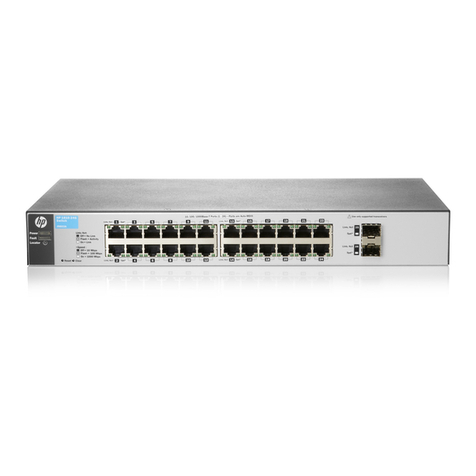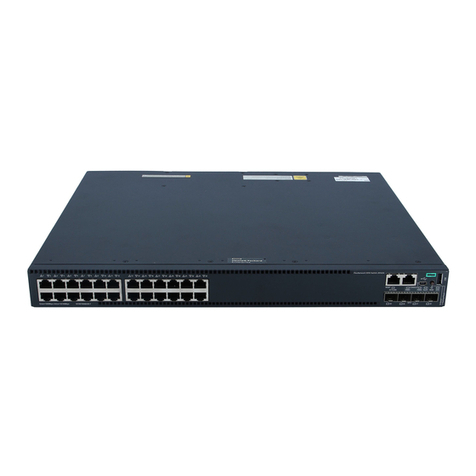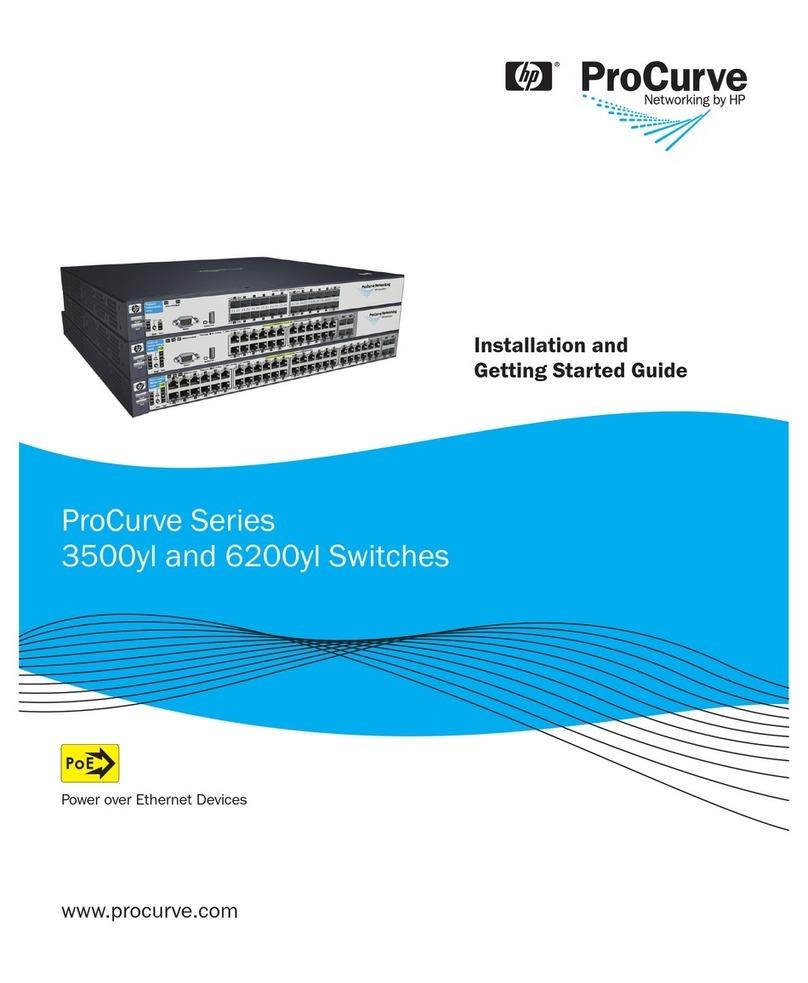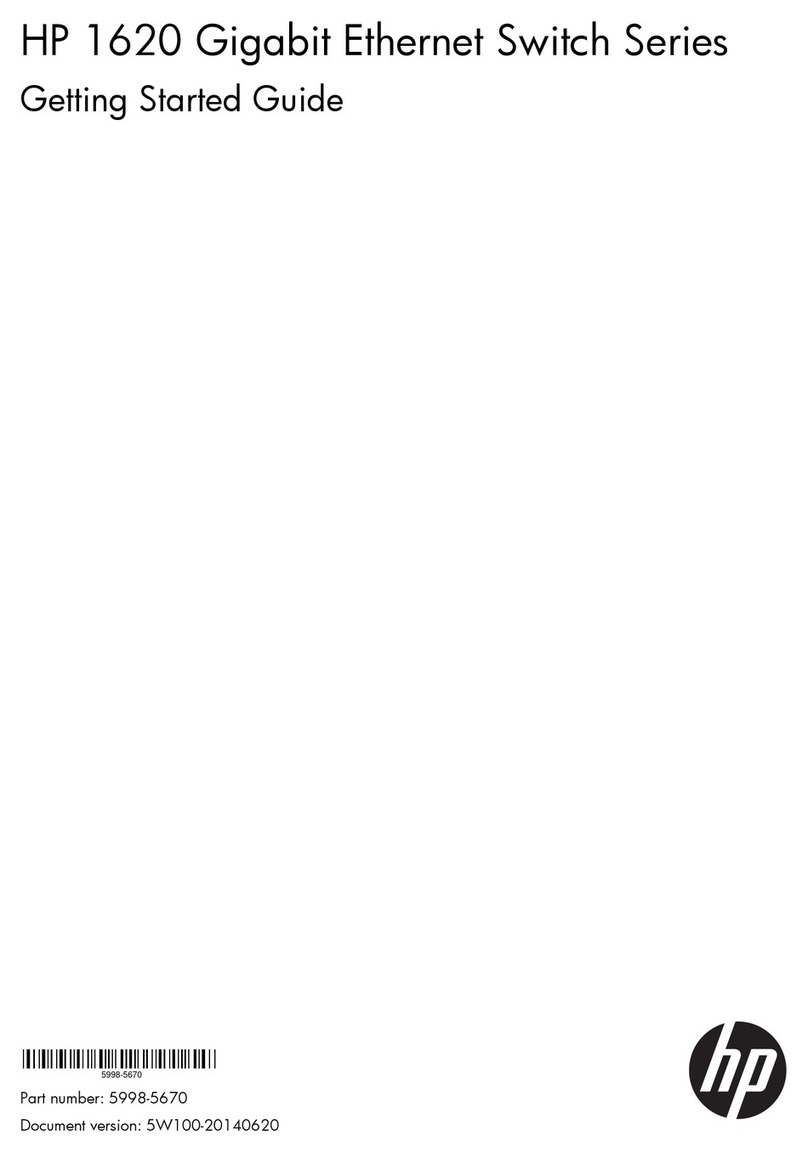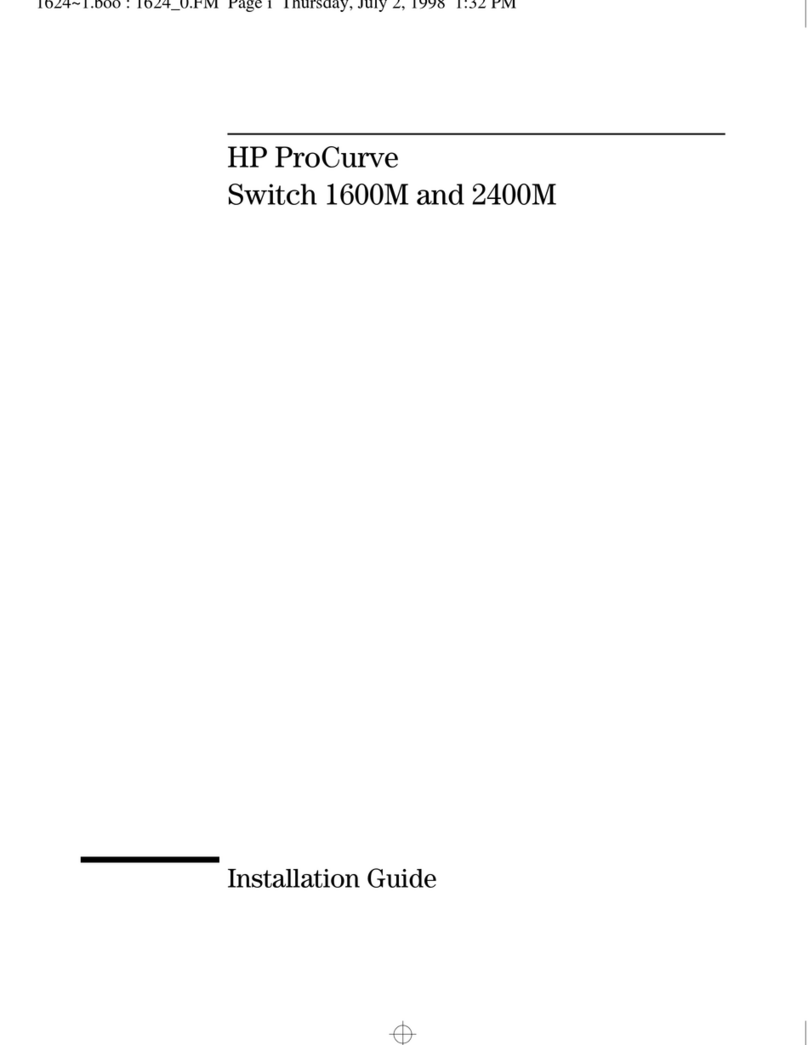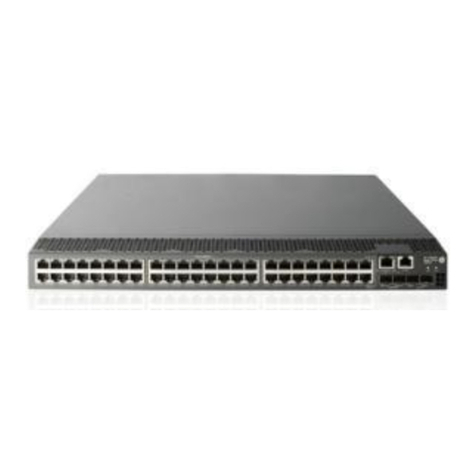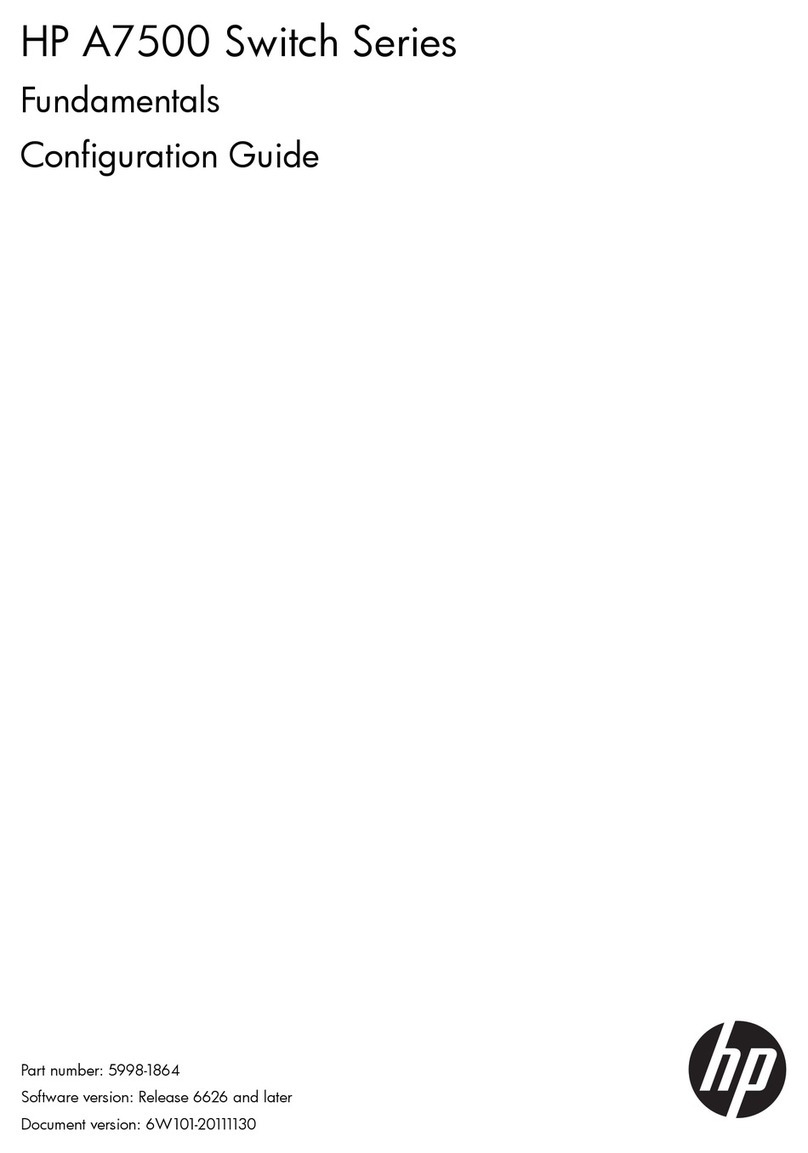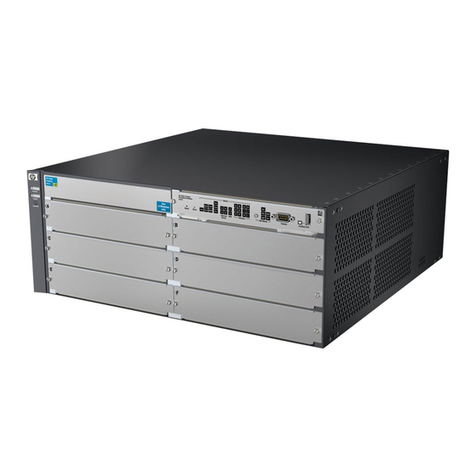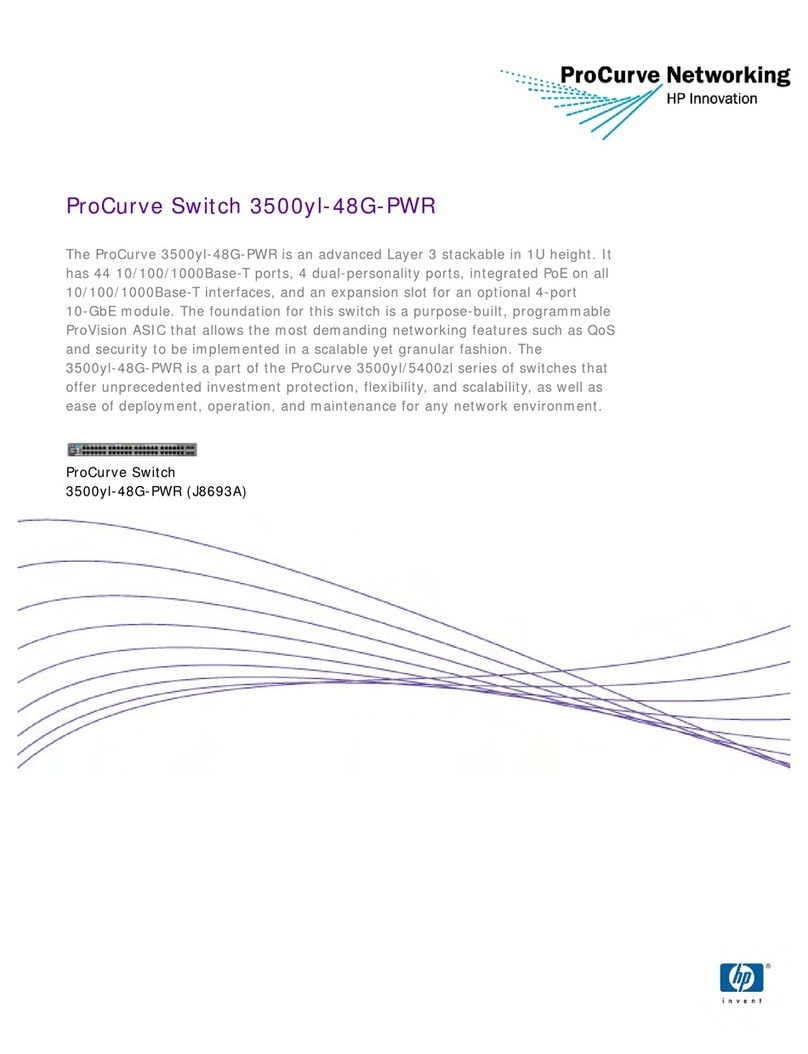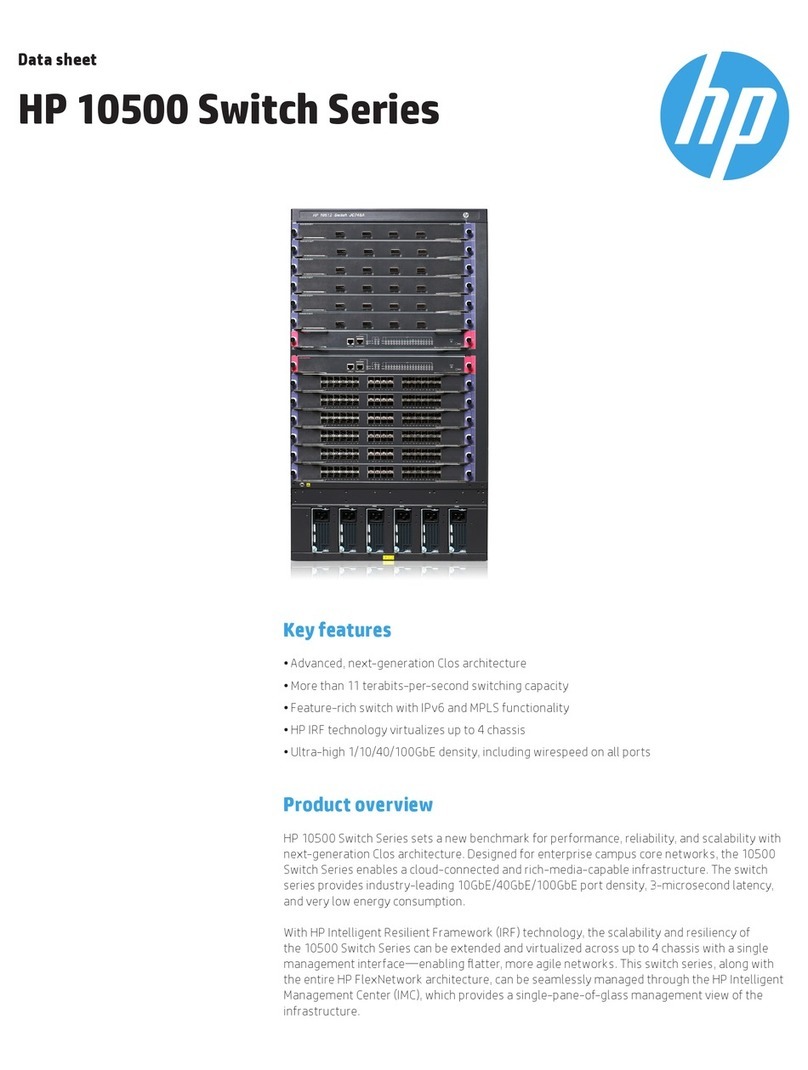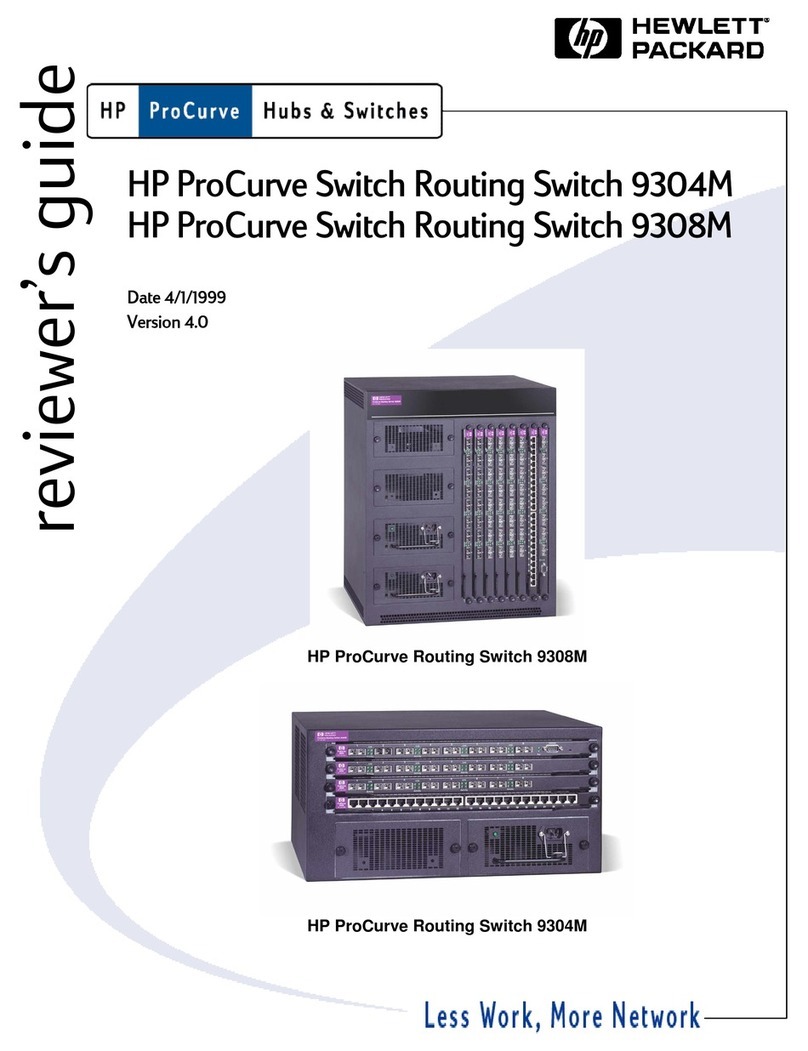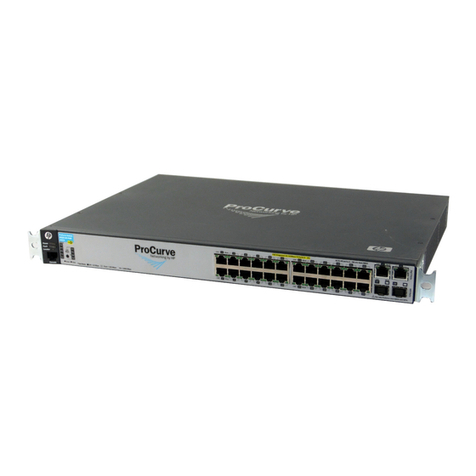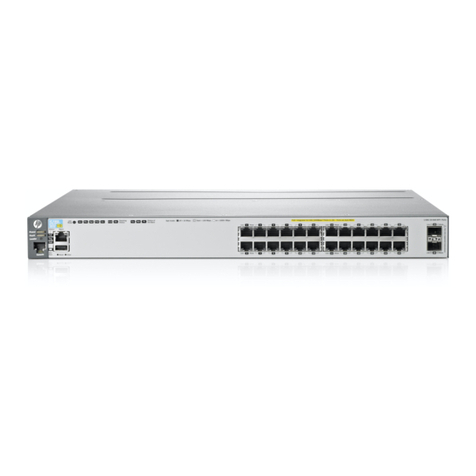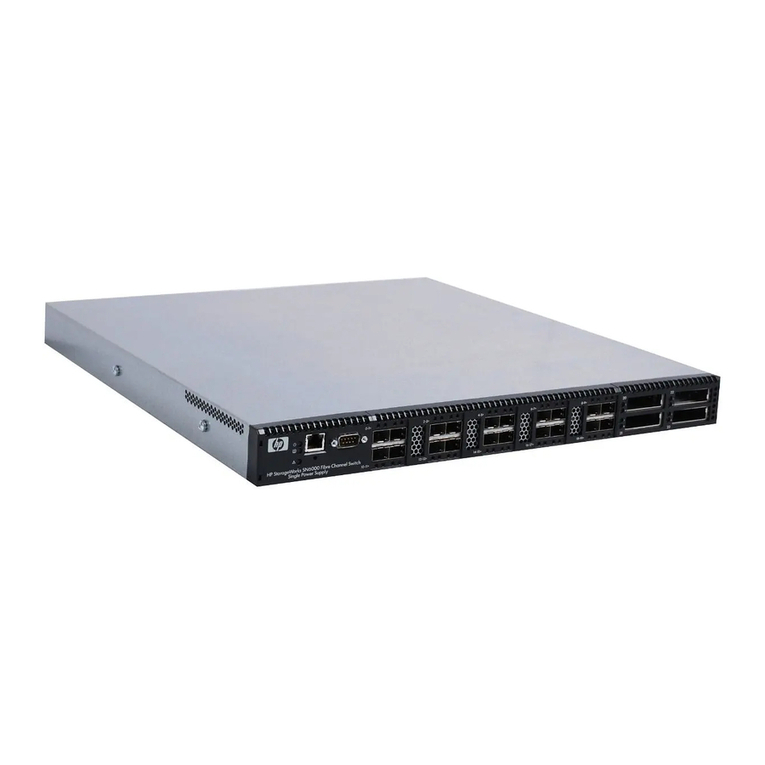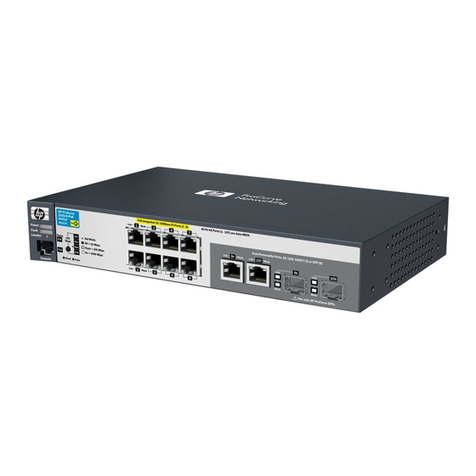
8
In this example, four gigabit uplinks per server blade enclosure were used. Because the two GbE
Interconnect Switches provide a total of twelve external Ethernet ports per enclosure, a wide variety of
linking configurations are possible. Additionally, the two interconnect switches within each enclosure
are connected by redundant crosslinks, which provide additional configuration possibilities.
Network load balancing
ProLiant BL systems configured with the interconnect switch support three network load balancing
solutions. Options exist for providing this functionality integrated within or exterior to the server blade
enclosure.
For load balancing within the server blade enclosure, the F5 Network BIG-IP Blade Controller (BIG-IP)
may be used. BIG-IP is a software option for ProLiant BL e-Class and p-Class systems that provides a
very economical solution to load balancing and traffic management between multiple server blades
that reside in a single to multiple server blade enclosures.
BIG-IP is available from F5 Networks as a software option installed on ProLiant server blades. One
license is installed on a server making the server blade into a “dedicated” load balancer; no
additional software can be installed on the server blade. For a redundant solution, two copies of BIG-
IP are installed on two server blades. The server blade(s) with BIG-IP installed may perform load
balancing on blade servers that reside in the same or different server blade enclosures, both e-Class
and p-Class. The blade servers may be located anywhere on the network as long as load balanced
traffic to and from the servers pass through the BIG-IP Blade Controller. For more information on BIG-
IP Blade Controller for ProLiant BL systems, see http://h71028.www7.hp.com/enterprise/html/4557-
0-0-0-121.html.
For load balancing exterior to the server blade enclosure, a third party layer 7 Ethernet switch or
network load balancing appliance may be used. This traditional approach uses a multi-tiered
architecture where the interconnect switches are connected to one or more layer 7 switches or
network load balancing appliances. Layer 7 switches and network load balancing appliances are
available from several network vendors including Cisco, F5, Nortel, and others. This solution is
supported on both e-Class and p-Class configured with any interconnect kit.
Investment protection
The GbE Interconnect Kits are fully supported in the p-Class sever blade enclosure with any
combination of ProLiant BL20p, BL20p G2, and BL40p server blades. Users can upgrade to the GbE
Interconnect Kit from existing RJ-45 Patch Panel and RJ-45 Patch Panel 2 Kits without powering down
the server blade enclosure or server blades.
Switch management
The GbE Interconnect Switch is an industry-standard managed Ethernet switch, which means that users
configure and manage the switch like other industry-standard Ethernet switches. To aid users during
initial deployment, the GbE Interconnect Switch includes a default configuration that is fully
operational at initial boot.
A web browser-based interface (BBI), menu driven console interface (MDI), and a command line
interface (CLI) with scripting capability are pre-installed in the switch firmware to configure, manage,
and monitor the interconnect switch. The interconnect switch also supports Telnet access, simple
network management protocol (SNMP), and remote monitoring (RMON). Any combination of the
downlinks, crosslinks, and external ports can be disabled, enabled, configured, and monitored on a
per port basis. Out-of-band and in-band access to the switch management interfaces are supported
